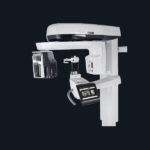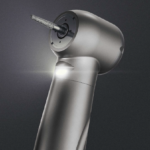
You are back home by confirming the not so good news that you are diabetic. Your doctor may have advised you to get some diabetes devices in order to keep a check on your blood sugar level.
The kind of devices you will need depends on the type of diabetes.
People suffering from Type 1 diabetes will need different devices to check their blood glucose levels than those who are suffering from Type 2 diabetes.
This article highlights the different devices that will help you monitor your sugar levels so that you remain within a safe limit. Let’s know about it more below!

Managing Diabetes
Diabetes has been around for years and continues to be a long-term health condition with not much cure in sight.
Therefore, the best way to go about this condition is to manage its symptoms.
Diabetes results from the pancreas not producing the appropriate amount of insulin that the human body will require.
It may also result from the body being unable to use the insulin adequately.
Insulin controls the amount of glucose in your blood.
When its function is impaired or its quantity isn’t enough, that could lead to hyperglycemia.
This is a condition whereby there is a high glucose concentration in the blood.
There are two types of diabetes.
Type 1 diabetes is when there is not enough insulin production. The pancreas does not produce sufficient insulin for the body to regulate blood glucose levels resulting in hyperglycemia.
In Type 2 diabetes there is no shortage of insulin production.
However, the body is incapable of using what is produced efficiently.
This is why the blood glucose levels increase.
Diabetes can be a risk factor for other health problems related to the kidneys and heart.
Therefore, it is crucial to maintain it at safer levels.
This is where diabetes devices come in handy.
These allow diabetic patients to manage their symptoms and get advice from their physicians remotely.
Hence, saving time, money and resources for both parties.
There are different devices for Type 1 and Type 2.
These help patients with a manageable variant of Type 1 diabetes and Type 2 diabetes so that you as the patient will not need to regularly get blood glucose tests.
However, your doctor can ask you to take them depending on your condition.
Nonetheless, these devices will aid in regularly keeping a check on your blood glucose levels and maintaining health.

Diabetes Devices for Type 2 Diabetes
Blood Glucose Monitor or Glucometer
Blood glucose meter or the glucometer is a device that checks the patients’ blood glucose levels in the comfort of their home.
Your doctor may recommend to measure the blood sugar levels by getting a test i.e. the HbA1c.
This test is done within a 6 to 12 weeks period.
However, in between you can use a glucometer to monitor the glucose levels.
This portable electronic device helps to keep the sugar levels in check so that it is not too high or low.
Alongwith the blood sugar meter, you will need a blood lancent and diabetes test strips.
Usually, these three will be together in one kit.
Firstly, the blood lancent pricks your finger to obtain a drop of blood.
This drop is transferred to the test strips by placing the drop at its edge and then put in the glucometer to get an instant reading.
Note these results to show your doctor whether your medication and treatment is working.
You can then throw away the diabetic test strip.

While choosing a glucometer or blood glucose monitor, look out for:
- Flexibility: Besides pricking finger tips, it also has an option of drawing blood from palm, arm or thigh
- Ease of Use: Should be straightforward and easy to understand
- Accessibility: Not read-only rather have other accessibility features like sound
- Performance: Provides accurate and consistent results
- Use Experience: Checking reviews
- Durabaility: It should be reliable even after constant use for years
- Insurance coverage: Check if your insurance provider covers the costs of the meter
- Information retrieval: Downloading and sharing the data on mobile
- Portability: Includes a carrying case so are easy to carry around
- Affordability: Covered by insurance or low cost out of pocket. Being able to afford is important.

Diabetes Devices for Type 1 Diabetes
Insulin Pen
Amongst the medical supplies a Type 1 diabetes patient will need includes insulin and insulin syringe.
Though, this was the stabdard method of insulin delivery, before there were elctronic options such as the pump and pen.
If you suffer from diabetes type 1, you wil need insulin that is either quick acting, long acting, regular/short acting, intermediate acting.
Thus you will need to inject it around one to four times every day depending on your current condition.
The common way could be using a syringe by drawing insulin from a bottle.
To make the delivery easy, there is the insulin pen.
This is a reusable pen with insertable or pre-filled cartridges of insulin.
Plus, it is a smart pen with an intuitive mobilephone app.
That helps you in tracking the doses you insert.
Moreover, it can give reminders , reports and alerts.
This device is easy to use than a typical syringe also give you additional information that helps manage your blood glucose levels better.
Insulin Pump
A pump on the other hand gives you a short or fast acting insulin.
The pump connects with a cannula that inserts in your skin with a needle.
The device can go over your waistband, or even socks.
You can set it up to deliver short acting small doses of insulin similar to how the pancreas work.
Moreover, you can also adjust to give you larger doses of insulin usually after a meal with carbohydrates, again similar to the function of pancreas.
You can also use the pumps with another device making a closed loop system.
That will give rela time glucose levels and allow to automatically regulate the right dosage depending on the current state of the glucose levels.
Let’s know more below!

Continuous Glucose Monitor
The glucometer has evolved over the years to give rise to new technology.
The continuous glucose monitor not only checks type 2 diabetes but also type 1 diabetes.
It deploys the insertion of sensor in the stomach or a a subcutaneous fat layer present in the arm.
As you implant it, there is communication between the sensor, the transmitter and the smartphone bluetooth to produce results.
Up to date Continuous Glucose Monitors have now all of these features.
In fact, they give readings after every 5 minutes in real time.
It can also trigger an alarm which alerts you that the blood glucose levels are either too high or too low.
Moreover, the app gives even mor einsights into how you can manage your glucose levels or if they are low or high.
Who Does It Benefit?
Continuous Glucose Meter is a device that works great for people with both Type 1 and Type 2 Diabetes.
It is especiall useful for people who have hypoglycemia unawareness.
In this consition they reach blood sugar lows without being aware of it.
Furthermore, it is a handy device for people that cannot reach their target blood sugar levels let alone maintain it.
The data can also aid the physician in getting insights where the troughs and peaks of your glucose level occur.
Hence, they can make a more tailored and customized treatment plan.
Not to forget it is very convenient and gets rid of constant fingerpricks.
Closed Loop System
CGM-insulin pump forms a closed loop system.
The pump will get the readings from the CGM and use that to suggest how to go about insulin dosage.
Thus when you are running high or low in sugar this closed loop system will already give you the solution.

Ketone Monitor
While checking your blood glucose levels is important, another factor to regularly monitor is the amount of ketones.
When the body lacks insulin to use sugars or carbohydrates for energy, it resorts to fats.
Having a high amount of ketones in your breath as well as urine suggests that your diabetes is not in control.
A high amount of ketones does not bode well for the body.
It can make the blood acidic resulting in diabetic ketoacidosis.
This condition can further result in coma or even death.
Therefore, it is important to control the ketones timely and keep a track of its production.
That said, this condition is rare in type 2 diabetics.
You can check the amount of ketones in ketone test strips.
To use these, urinate into a cup and put the test strip inside.
Shake any excess urine and wait till the strips change color.
Once you get the color, compare it with the color chart on the kit.
This wil tell you whthere the ketone amount is low, moderate or high.
In case, it is moderate or high, consult your doctor right away.
While urine and blood will give the most accurate measurement for the levels of ketones, a breathalyzer can also give you an overview but not necessarily accuracy.
Summing Up,
All of these diabetes devices indicate your blood glucose levels.
Having them is absolutely necessary for a diabetic.
They allow you to monitor and regulate your blood glucose levels in order to live a healthy life.
Therefore, buy those that go with your type of diabetes after consulting your doctor.




